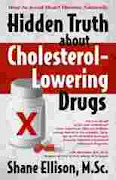Eating healthy does not mean giving up everything you enjoy. Changing the sort of food that you have eaten all life may not be easy, but it is important in reducing the risk of developing heart diseases. In continuation of eating for a healthy heart 1, this is the highlight on the remaining groups of foods so that you can know how to include all in your daily healthy balanced meals.
Group 3 - Fats and oil: There are two types of fats and oil, saturated and the unsaturated fats. They all contain the same amount of calories and are composed of fatty acids. At room temperature saturated fats are solid while unsaturated fats tend to be liquid. Example are:
Meat fat - (beef, pork, lard. Mutton, dripping).
Dairy fat - (cheese, butter, cream)
Plant fat - (palm oil, coconut oil)
Processed fat - (cakes, biscuits. Pies, snacks, margarine)
Saturated fats increase blood cholesterol and LDL-C levels rise is linked with risks of heart diseases. So it os highly required that you reduce your intake of saturated fatty acids.
Unsaturated fats are found mainly in vegetable. It is sub-divided into monounsaturated and polyunsaturated. The monounsaturated fat is oleic acid, the main constituent of olive oil. This oleic acid is known to protect the heart by reducing the artery clogging LDL-C and then makes the blood platelets less sticky and less likely to form blood clots. Other major source of monounsaturated fats are canola oil, nuts, and peanut oil. Research showed that eating nuts can significantly lower the amount of bad cholesterol (LDL-C) in the blood.
The polyunsaturated fats have two families, the Omega-6 and Omega-3. Omega-6 fatty acids are found mainly in vegetable source such as sunflower, sesame seeds, corn, safflower margarine and soy oil. While Omega-3 are found in oily fish such as trout, salmon, sardine, mullet, tuna, anchovies, herring, mackerel, also in green leafy vegetable,canola, soya , rapeseed and walnut oil. It is advised to consume more of Omega-3 because fish oil is a very rich source of eicosapentanoic acid (EPA) and decosahexanoic acid (DHA) which helps maintain a healthy heart. They have shown to:
Reduce blood pressure
Reduce thrombosis (blood clot) by thinning the blood
Reduce blood triglyceride levels.
So as you enjoy fish in your meals, try to include one portion of oily fish.
Group 4 - Proteins: are made up of amino acids and is required for the repair and maintenance of all body tissues, in fact it’s called the building block of life. The major dietary sources of protein are all type of fish, meat, eggs, milk, cheese, beans, peas, lentil, nuts, and cereal grains. Different food contain different type of protein, so it is important to eat a variety of protein source to ensure you are getting enough from each.
Group 5 – Vitamin and minerals: these are essential part of your diet. They are the anti-oxidant that your body need to fight off diseases. We have the fat soluble vitamins
(vitamins. A, D, E,& K) while the water-soluble vitamins are all the eight B vitamins, vitamin C and folic acid. The main anti-oxidant are vitamin C, vitamin A in form of beta-carotene, and vitamin E. This helps the heart by reducing the oxidation of LDL-C, thereby reducing the build up of fatty deposits in the arterial walls. Sources are all kinds of fruits, vegetables, corn, olive and vegetable oils,cottonseed, apricots, sweet potatoes. Most often folic acid and the B vitamins are readily available from our balanced diet. The good source includes leafy green vegetables like spinach and broccoli, cereals, rice, milk, eggs, fish, citrus fruits, potatoes, berries.
Finally drinking enough water helps to flush out the unwanted materials in the body. By making good choices in your meal and eating well, you can reduce the risk of developing heart diseases. Enjoy! you deserve the good health .
To learn more about eating for a healthy heart Call 1-800-AHA-USA1 (1-800-242-8721) or visit http://www.americanheart.org
Knowledge is power, so Learn and Live!




